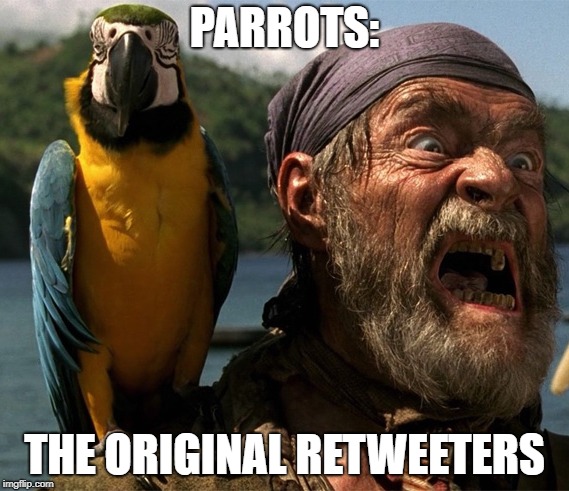Transcript of Communicating with Empathy in the Digital World written by John Jantsch read more at Duct Tape Marketing
Transcript
This transcript is sponsored by our transcript partner – Rev – Get $10 off your first order
John Jantsch: Has technology in the virtual world that we live in made it easier to communicate or harder? Sure, in some ways it’s made it easier to have distributed staff and have clients all over the world, but we’ve lost the emotional impact of our communication when we don’t have that face-to-face. Think about our emails that maybe don’t quite get the point across that we were trying to make. We have to learn how to communicate differently in a virtual world. And in this episode of the Duct Tape Marketing podcast, I visit with Dr. Nick Morgan, author of Can You Hear Me?
 This episode of the Duct Tape Marketing podcast is brought to you by CloudPhone. You can get big-time modern virtual phone functionality at a fraction of the cost. In fact, keep listening. I’m going to tell you how to get 50% off.
This episode of the Duct Tape Marketing podcast is brought to you by CloudPhone. You can get big-time modern virtual phone functionality at a fraction of the cost. In fact, keep listening. I’m going to tell you how to get 50% off.
Hello, and welcome to another episode of the Duct Tape Marketing podcast. This is John Jantsch and my guest today is Dr. Nick Morgan. He is considered one of America’s top communications coaches and he’s the author of a book we’re going to talk about today. Can You Hear Me? How to Connect with People in a Virtual World? So, Nick, thanks for joining me again.
Nick Morgan: John, great to be back with you.
John Jantsch: There are lots of pros to this virtual world. I mean, I’ve been doing this a long time, and I mean, it used to be if somebody wasn’t in your town, and you couldn’t get in the car and go drive to them, you couldn’t have them as a customer. Certainly, you couldn’t have an employee that wasn’t there kind of sitting at a desk. So a lot of pros, but obviously your book suggests that there are some inherent hurdles as well. So you want to kind of map out those hurdles that we maybe haven’t considered that now so many of us are doing a lot of our work virtually.
Nick Morgan: Yeah, absolutely. First I should acknowledge you’re absolutely right, that there are huge advantages to the virtual world. That’s why it’s taken the work world and a lot of our personal lives as well by storm. And the greatest acceleration has been in the last decade with mobile phones; they really transformed our lives. After a decade, it’s just become clear that in spite of what we thought at the beginning, it’s not all good. So on the positive side, we get what they call a reduction in friction out in Silicon Valley. Meaning it’s much easier to send emails and everything else. It’s also virtually free. Your reach extends enormously and as you said, it means that we can do things like work remotely and all that sort of thing. There’re huge amounts of good. It’s not going away. I’m an audiophile myself, an early adapter.
I love gadgets. I have all my Apple gadgets line up. So your listeners should understand, I’m not saying that this is a bad thing or it’s going to go away either one. I’m saying that there are some problems which we’re now slowly beginning to understand that really need to be paid attention to. It was a couple of studies that caught my eye.
First of all, there are two cohorts as the statisticians like to say that have been studied pretty closely and you may find it surprising they are teenage girls and retired people for their usage of virtual media, virtual means of communication. Teenage girls, of course, because mobile phones have transformed their lives perhaps more so than anybody else. They spend more time on mobile phones than any other group as far as we know.
The other group, perhaps surprisingly again, is the retired population, shut-insurance, and folks who are less mobile perhaps. And the whole idea for them was that the virtual would be great because it would enable them to keep in touch with their grandchildren and their kids and enable them to stay connected to a world, which, otherwise might be harder for them if they were less mobile, so on and so forth.
Studying those two populations was really shocking. As I saw the research, there’s a direct correlation between the amount of time those two populations spend on their mobile phones or in virtual media and their likelihood of being depressed. The basic equation or the basic deal that this will enable you to stay connected isn’t working for those two populations and it isn’t working for everybody else. When I saw that I thought I have to understand this a little bit better. So I dove further into the research and I came up with five problems that the virtual world has that we need to address and we need to do our best to fix. So let me pause there for breath.
John Jantsch: I wonder if you know, I don’t think there’s too many teenage girls listening to the show or too many retired folks. What you’re suggesting is that that translates to some percentage of everybody who is doing this, including people who work for companies remotely and distributed. Would it be fair to say that you could also frame these as differences? So in other words, are there not just a problem necessarily? There’s just a different way that we have to communicate given the technology that we’re using?
Nick Morgan: Yes. That’s the nice way to put it, John, and I have no problem with that. The other stat I should throw in there, by the way, is that employee disengagement as the number of virtual workers and the amount of virtual work we do goes up, employee disengagement also increases and it’s currently at an all-time high. It’s roughly two-thirds here in the United States and it’s higher worldwide. It seems to be affecting the work population too, although there is a correlation, we haven’t an established a causation, but there’s a very strong correlation and that’s the caveat here. So yes, we do and that’s exactly the point of the book. We do need to learn a new way of communicating, but first, we have to understand what’s going wrong so that we can communicate better.
John Jantsch: Yeah. Because one of the themes that comes up time, and again. And not just in your book, anytime people have talked about technology. Technology was supposed to make us more connected in study after study shows that we’re now lonelier than ever.
Nick Morgan: Yes, exactly. That’s what starts me off, and I thought, let’s understand why, and it’s because that’ll tell us what we can do about it. So the first big problem is that we’re still communicating as if we were communicating face-to-face. In other words, when I get on the phone, I don’t think consciously I’ve got to do something fundamentally different than when you and I are having a face-to-face conversation. And yet I do because here’s what happens on email and on the phone and even in video conferencing, although to a slightly lesser extent. What happens is this huge wash of emotional information that normally gets exchanged between people easily and unconsciously, most of that gets lost. And I don’t mean to be mysterious about this. Let me give a simple example.
So when you’re sitting there conversing with somebody face-to-face, and you say something a little smart ass, “Your hair’s on fire, John,” you can tell by the expression on my face that I’m kidding. Let’s hope. And I can tell if I say something that hurts your feelings, or it goes a little too far, I can tell right away by the look in your eye or the fact that you winch or something like that. That’s what I mean, those kind of simple human exchanges of intent are profoundly important for us humans. We care enormously about other people’s intent and not just whether they like us or not, but are they on the team, are they enthusiastic about this idea? Are they going to work hard to carry it out or are they just kind of lukewarm, or are we carrying them? Those kinds of day-to-day work-related concerns about other people’s intent, and our own intent are incredibly important to effective working.
John Jantsch: Well, and I suspect we get conditioned too, unconsciously, to take that feedback in. Right? I mean we don’t even know we’re doing it.
Nick Morgan: Yeah, exactly. We’re not even aware of consciously that we’re doing it. We don’t have to think about it, but then we get on the phone and it’s just that much harder and I could go into the technical reasons why that’s the case. It has to do with data compression and the way voices are compressed over the phone, but let’s not worry ourselves in the details. The point is, Justin, that it gets harder to detect that same emotional information. It’s a much narrower bandwidth, is a simple way to think about it And then, of course, you think about email, it’s much, much worse. How many times have you sent an email with a clever little joke in it that you thought was hilarious and the other person for some unbelievable reason got offended? And then you had to spend six or seven emails sorting out the problem that you inadvertently caused because the other person was so dumb. Couldn’t have been me.
John Jantsch: I’ll give you another one example that I remember vividly. The first time I did a webinar, and actually it’s so long ago, Nick, we called it a teleseminar, there was no video involved. People just got on the phone and listened.
Nick Morgan: Fantastic.
John Jantsch: I remember I had been speaking publicly to audiences for a number of years by that point. And I remember the first time I did that, I had trouble breathing because I was getting no feedback at all and I had no idea if what I was saying was landing at all. And I remember how different and odd that was.
Nick Morgan: Yes. And you bring up the further point, which is really important for your audience to get, which is our brains are constantly seeking that emotional feedback and that feedback just about our surroundings and imagine us in the evolutionary state as a beings walking through the African Savanna, looking for shadows because one of them might be a tiger. It’s to our advantage to assume the worst in a situation like that because that’s liable to keep us alive. So you can imagine people evolving to be the ones who survived to be a little more nervous than the folks who got eaten by the tigers.
As a result, when we don’t get that emotional information precisely to your point about your talk, the first time you talked, then what we do is we assume the worst. We assume that those people hate us or they’re disinterested or they’ve checked out or they’re falling on the floor, falling asleep. And so we tend to get more anxious and more panicked and the communication tends to turn negative. At the far end of this, of course, is trolling. And that’s why there’s so much trolling in the virtual world because everybody’s busy unconsciously assuming the worst about each other.
And that’s the first real serious hazard of virtual communications and one that we certainly didn’t intend back when we invented or embraced, I should say, because I didn’t invent it, but it embraced the email world, and then all the other aspects of the virtual world.
John Jantsch: The telephone is still a vital way to do business, but it’s changed. The technology has changed. And CloudPhone is the answer. It’s perfect for small business. Comes with local numbers, toll-free vanity numbers like 1-800 DUCT TAPE you can send and receive text messages on your business line. Works with any of the phones that you already own. And you can get a ton of other business features like call recording and conference calling, and voicemail transcription. Because you’re one of my listeners, I’m going to get you a 50% off the small business plan forever deal. Just go to cloudphone.com/ducttape.
Nick Morgan: Well, and I’m probably jumping around here, but I’ll throw that around to the audience that is listening, I know now because I watch people all the time and you hear anecdotally from people and now that we have this technology, it’ll say how much of your audiences multitasking while you’re talking when you’re on a Webinar or something. I know I don’t attend to a lot of webinars and things myself because it’s extremely hard for me to stay focused.
It is, it’s just there’s less emotional input, throughput if you will, coming through. That leads to the second problem that really, you just described it, which is without the emotional feedback that we’re getting, we don’t stay engaged and we have a lack of empathy. That is, we’re less worried about the other people because we don’t know how they’re feeling, so we assume they’re feeling kind of bad. But our empathy quotient, it really go way, way down. And as a result, again, trolling is the final outcome of that. And that leads to the next problem which is, and this one may surprise people, when you take out the empathy, when you take out the emotional information, then it gets harder to make good decisions. Now, that’s surprising perhaps because we tend to think of decision making as a logical exercise.
For Star Trek fans this is Mr. Spock versus Captain Kirk. Spock is the decision maker. He’s the logical but, in fact, the way we make decisions is what we learned as a child. It’s not logical. It’s imagine that moment when you were two years old and you walk into the kitchen and there’s this pretty red glowing object on the stove and you think, “Oh, that’s cute. I’m going to go touch that.” So you put your finger on it, what happens? You’re suddenly awash and pain and anger and shock and horror and fury, and so you never, ever, ever do that again.
Now, that’s a very simple example of how memory works and how our brains are constructed. We have little experiences it’s like little videos running in our head and we try stuff out and according to how well or badly it works, we attach emotion to it and file it away in our brains. And so most of our decision making is really goes to like the following. So you go, “Okay, so I’m thinking about buying a new car. Well, the other times I bought a new car, it went like this. It was easy. It was hard. I got screwed by the salesman. I didn’t. I got a good deal, good doing this.” So we compare it to past experiences and then we make an emotional decision accordingly depending on how painful or pleasant it was.
Now, if you take out the emotional attachments, it gets harder for us to make decisions. It gets harder for us to measure the importance of what we’re doing because we’re just not that interested. So imagine, for example, a work team on an audio conference that they do every single week and the boss is droning on and everybody’s got it on mute and they’re keeping up with email while they’re talking or not talking while the boss is talking. And then the boss suddenly says, “Okay, so what do you want to do about X?” And it’s very hard for people at that point to make a good decision because they’re not invested in the conversation. They might be bored if they were face-to-face, but chances are it’s a little harder to get away with and the boss would know and, and people would see each other and as a result, they’d calibrate accordingly. So that’s the next problem that happens online and it’s a subtle one and it means we really have to watch ourselves because it’s likely that the decision making, the quality of the decision making in virtual conversations is going to be poor.
John Jantsch: Again, I know we’ve spent more than half the show allotted show telling people what’s wrong, what the problems are. So let’s flip it completely around and say, “Okay, what do we need to be doing?” Because I mean, the reality is we, in some cases, have to work this way. So what do we, what can we do to actually take those inherent challenges and say, “Okay, we need to be aware and so we need to do X.”
Nick Morgan: Great. Yeah, excellent question. And that’s what the book is about. And the bad news, if you will, is that there isn’t one big thing you can do that will cure everything. The good news is there are a lot of fairly simple things you can do to begin to make the situation better and none of them is particularly complicated. What we’re trying to do here is put in the emotional subtext that’s been taken out. What I say is we need to learn a new language, and it has the great advantage of if you start practicing this at home and then you have teenage kids, it’ll make your teenage kids think you’re really, really weird and that’s always good. So this is worth trying.
John Jantsch: Is this going to end with emojis in some fashion?
Nick Morgan: Absolutely, John. Emojis are going to be involved. But the first thing to do and a little more seriously is you need to think about asking yourself the question or asking your team the question and you may even ask it out loud, but the question that really begins to get you thinking along the right lines is, “How did what I just say make you feel?” Now, if I asked that question to myself and I’m in a conversation with you, John, and I realize I don’t know the answer to that question, then I need to slow down and ask it perhaps out loud or ask some related questions that let me know, “How is John really feeling about this? Was this successful or not?” And one of the simple ways I recommend for people, for example, to do this, who have a weekly staff meeting, let’s say a team meeting, that’s virtual and the team is spread out all over the world. It’s in Singapore, in California and Europe or something.
You want to make this easy on yourself because you’re going to be doing it every week. So just start the meeting by saying, “Okay, I want everybody to go around, check-in, like a stoplight, red, yellow or green. And Red means I’m facing a disaster. I shouldn’t even be on this call. Yellow means things are a little tense so there’s something going wrong, but I can cope. I’m here. And Green means everything is great.
And so that’s a very easy thing to do. People have permission to do it. And then whoever the team leader is, or whoever’s convening the conference call, if somebody says red, they can say, “Oh, John, I’m sorry to hear that. Do you want to tell us what’s going on? Or do you want to be led off the call?” It gives them permission to address the issue in a way that’s much, much harder to do if you just say, “Okay, let’s get started. Everybody. How is everybody first?” They’re one of those kinds of things that we tend to do where the person is really upset or really fuming or really got a real disaster is just sort of beginning to try to think, “Ah, how can I say this?” Or, “How could I talk about it? I don’t want to talk about it.” And then by the time he or she has figured out the answer to what they’re going to say, everybody’s already moved on and you just don’t have time to kind of get that inside.
The red, yellow, green allows you the space and the respect of everybody to give an honest answer in that situation. And then you can ask that question again at the end of the meeting just to see how the meeting affected people. But it’s really about slowing down and starting to put in little markers like that, that allow people, give people the room, the space, the respect to be able to say how they’re feeling. We just have to get more conscious of that because we can’t keep communicating as if we were face-to-face.
John Jantsch: I think that, that’s one of the things that, this mind-body connection that is so important. Half of that lost. I think by being virtual but again, I go back to the fact that, that’s the way we work today. And so I think we just need to come up with new habits, new ways to work. And one of the things I remember reading in the book is that, and I think this is what you’re alluding to, this kind of chit-chat period and the beginning. How’s everybody doing? Yeah. But the reality is that we used to do that when we’d walk down the hall from each other. And so we’d know how people were doing or we’d know what was going on in their family. And now that may be the only opportunity we get is that kind of first five minutes in the weekly status call. I struggle with that sometimes. How do you have that moment? Do you need to separate that moment and make that another meeting somehow?
Nick Morgan: Yeah. I recommend a number of strategies, and you can pick the one that works for you. The problem with the beginning of that typical conference call is think how it actually goes. You’ve got a sound that lets you know that somebody else has come on. So here’s how it goes. You sign in. Let’s say you’re the team leader, and you’re responsible, and you sign in a minute beforehand. So you’re all ready to go, and you hear the first boop when somebody else signs, and you go, “Oh, who’s that?” And it says, “John.” “Oh, John a great how you doing?” And we have something that corresponds to a one-on-one conversation. And we start into that for about 15 seconds and then there’s another boop and somebody else goes, “Oh, who’s that?” “Oh, it’s Bill.” “Okay, Bill. Great. Well, Bill, it’s Nick and John on the call. How are you?”
And then Bill, since it’s a three-way conversation, we have a little different response and it kind of a three-way conversation than we do a two-way conversation. And so Bill starts in on how he is, but perhaps not as honestly. Then he’s two seconds in and we hear another boop. Then, “Who’s that?” So you end up with this really idiotic … It’s typically the first five minutes of one of these calls where there’re just endless interruptions and it’s really hard to get a clear conversation going with anybody, let alone the whole group. And so I suggest a couple of things.
The stoplight approach is one. Another is to say, “We’re all going to sign in at such and such a time and the first X minutes are going to be chit-chat. We encourage you to join and then we’ll start the business at such and such a time.” that relies on people being honest and good timekeepers, and we all know in the business world, some are better than others.
Another one is to get people, and this works really well for teams that are in different countries. Is to get people to record little 30-second videos of themselves, of their surroundings, have a conversation they’re having or the look from their desk or just anything about their local culture that matters to them or a fun thing they did on the weekend. You can set the assignment so everybody has permission to do it and you’d be surprised how well that brings people together because everybody gets a chance to see the videos as the meeting starts and laugh at them or celebrate with them or, responded accordingly. That’s another one that works.
And yet another one is to put the, and this one, it depends on having a good team already, a strongly united team, but you can put the chit-chat at the end because that then avoids all the interruptions. That can feel a little more artificial unless the team is really strong. But the point is that you need to separate out the chit-chat as you were calling it, but it’s really the emotional connection. The trust-building, let’s say is a better word for it, better term for it. The trust-building part of a call like that, and then the business transaction part of the call like that because it’s hard in a virtual setting to do both cleanly and well. So it works much better to separate them.
Then, of course, another and even the better way to go about this is to insist on regular face-to-face meetings. The general argument in favor of virtual communication and against face-to-face meetings is expense and time. That’s the great advantage of the virtual world. It’s free. You don’t have to travel, you save enormous amounts on your travel budget. And it’s very convenient. Well, think about how actually rich a face-to-face conversation is in the ways that which we’ve been talking. It’s an actually very efficient way for humans to communicate and so if trust is at all an important part of what your team does, or what you do with your customers, if this is a customer call, then you should be enhancing that virtual conversation with a face-to-face one every now and then and you’ll save yourself enormous amounts of effort online just because when we’re face-to-face, all that communication happens so effortlessly. Even as we move further and further into the virtual world, don’t forget the importance and the ultimate efficiency of a face-to-face conversation.
John Jantsch: One of my daughters worked for a few years for a company, I think they had about 100 employees at the time, and they were all distributed. So there was no office for the company at all. Three times a year or so they would take a week and go somewhere really cool. But they all work for the week. It wasn’t just play. I mean, it was let’s work on, it was a software company, let’s work on code together in the same room and I think that, that really, they, they still had an incredibly strong culture, I think by virtue of taking that money that they might’ve spent on an office building and putting it into what I think was probably a more cultural enriching expenditure.
Nick Morgan: Absolutely. Yeah. That’s the best of both worlds. Something like that is the best way really to handle the virtual aspect and the face-to-face aspect.
John Jantsch: I want to end on one, that I think haunts everyone. That’s if you had a couple of tips for email. I know over the years, as it’s become such an important tool, I know the one thing that I definitely do is I spell everything out as plainly as I possibly can and make no assumptions that they understand what I’m trying to point … I’ll go back and read it and go, “Okay, could that be, should I have used a noun there instead of a pronoun there?” I mean, I really sweat over no important emails that they probably end up a little longer, but I hope that they’re clear.
Nick Morgan: Yeah, you’re doing exactly the right thing. One of the sort of implicit of things that happens as we get more important and rise up through the ranks in an organization is, all the studies show this, our emails tend to get shorter and shorter and there’s kind of, there’s a reason for it as presumably as you go up the ranks, you’re answering more and more email so you’ve just got more to cope with. But it’s also part showing off too, isn’t it? “I’m so busy and important I can afford or I have to respond with a one-word response.” Well, it’s almost better to type out the one-word response on a piece of paper and then set it on fire rather than sending a one-word email because the likelihood that you’re going to be misunderstood, especially as you become more important in the organization, we care more and more about your intent and we care most of all about the CEOs or the president’s intent and so that it’s most incumbent on him or her to be most clear.
And so I recommend in the book a format that sort of ensures that you start with a headline and says what the email is about and then you give the substantive part of it and then you talk about the emotions at the end. And then you ask, you give the other person permission to ask, how does this make me feel or to answer how this makes me feel? I also recommend, and people may find this funny, of the use of emoji’s and emoticons because early on there’s some research that suggested that in the business world, people look down initially on folks who use the emoticons and emoji’s because they were seen as sort of childish or something, but they can save a lot of hurt and time. You put a smiley face at the end of something that’s intended to be a joke.
Then just maybe the other person won’t get as offended by the tone in it and maybe they’ll say, “Okay, yeah, he was just kidding. I’ll forgive him.” And so it’s a huge time saver. So I would say use the emoji’s, especially the millennials are going to use them anyway. And so in a few years, it’s going to be second nature. You’re going to have to use them or you’re going to look like somebody who’s out of touch. So get used to emoji’s, use them because they’re going to save you a lot of emotional angst.
John Jantsch: Yeah. And I would say my own experience too, you get in a hurry and you’re just trying to answer what somebody asked you. And you forget to say thank you for responding to my email and giving me such a thorough answer. I think that’s not intentional. I think it’s just the person’s not there. So I just, I didn’t quite have the cue to say thank you first. And I think that, that’s one thing I certainly try to work on.
Nick Morgan: Yeah. And you’d do that automatically if the person was face-to-face, so one of the little tragedies I learned about the other day was studies of kids who have Alexa in the household or the Google equivalent. They actually learn to demand things of other people that sound incredibly rude when you’re face-to-face. So they’ll say to somebody, “Daddy, get me some cookies.” Right? Whereas normally they’d learned, “Can I please have some cookies?” Or, “Daddy, would you please get me some cookies?” Because that’s what works with Alexa. I’ve heard, and I don’t have the direct evidence to support this, but I’ve heard that Alexa and some others are now creating child versions that demand you say please and thank you to Alexa, which I think is a very good idea if that’s who’s teaching us how to communicate.
John Jantsch: You’d get a kick out of this. I actually ask Alexa to please tell me a joke. I don’t demand it because I think you’re absolutely right and she or he or whatever Alexa is, will respond even if you ask politely.
Nick Morgan: There you go. It’s good practice, John, for when you actually talk to a real human being. You’ll remember how to do it.
John Jantsch: Well, Nick, this was fun. Thanks for joining me today. I’m speaking with Dr. Nick Morgan, author of Can You Hear Me? So, Nick, tell us where people can find out more about you and your work as well as the book?
Nick Morgan: Sure. Thanks. It’s publicwords.com is our website and there’s lots of free information there about public speaking, my passion, as well as the hazards of the virtual world. So have a look there and there’s a contact form that you can ask me questions directly or just send it to my email, nick@publicwords.com.
John Jantsch: Maybe I’m not stealing your thunder here because maybe you’re already in conversations with people. This ought to be a college class.
Nick Morgan: I think you’re right.
John Jantsch: All right.
Nick Morgan: I think we all need it.
John Jantsch: Yeah, absolutely. So thanks again and hopefully we’ll run into you out there on the road someday soon.
Nick Morgan: Excellent. Thanks, John.
from Duct Tape Marketing https://ift.tt/2RtTwIZ
via IFTTT
 This week on the Duct Tape Marketing podcast, I speak with
This week on the Duct Tape Marketing podcast, I speak with 


 7. I like to run all my AB tests in reverse after the first round. I call it AB/BA testing. It’s great, but only works if your target audience are dancing queens, young and sweet, only 17. 8. I have this marketer friend who still believes in last-touch attribution. He just opened a brick-and-mortar store. He says his highest-performing sales rep is the counter in front of the cash register. 9. Knock, knock! Who’s there? Documented content marketing strategy! Documented content marketing strategy who? I’m not surprised you didn’t recognize me…
7. I like to run all my AB tests in reverse after the first round. I call it AB/BA testing. It’s great, but only works if your target audience are dancing queens, young and sweet, only 17. 8. I have this marketer friend who still believes in last-touch attribution. He just opened a brick-and-mortar store. He says his highest-performing sales rep is the counter in front of the cash register. 9. Knock, knock! Who’s there? Documented content marketing strategy! Documented content marketing strategy who? I’m not surprised you didn’t recognize me…  12. How many CRO experts does it take to change a light bulb? 100 the first time, 98 the second time, 93 the third time, 104 the fourth time, 25 the fifth time…. 13. I handed
12. How many CRO experts does it take to change a light bulb? 100 the first time, 98 the second time, 93 the third time, 104 the fourth time, 25 the fifth time…. 13. I handed 